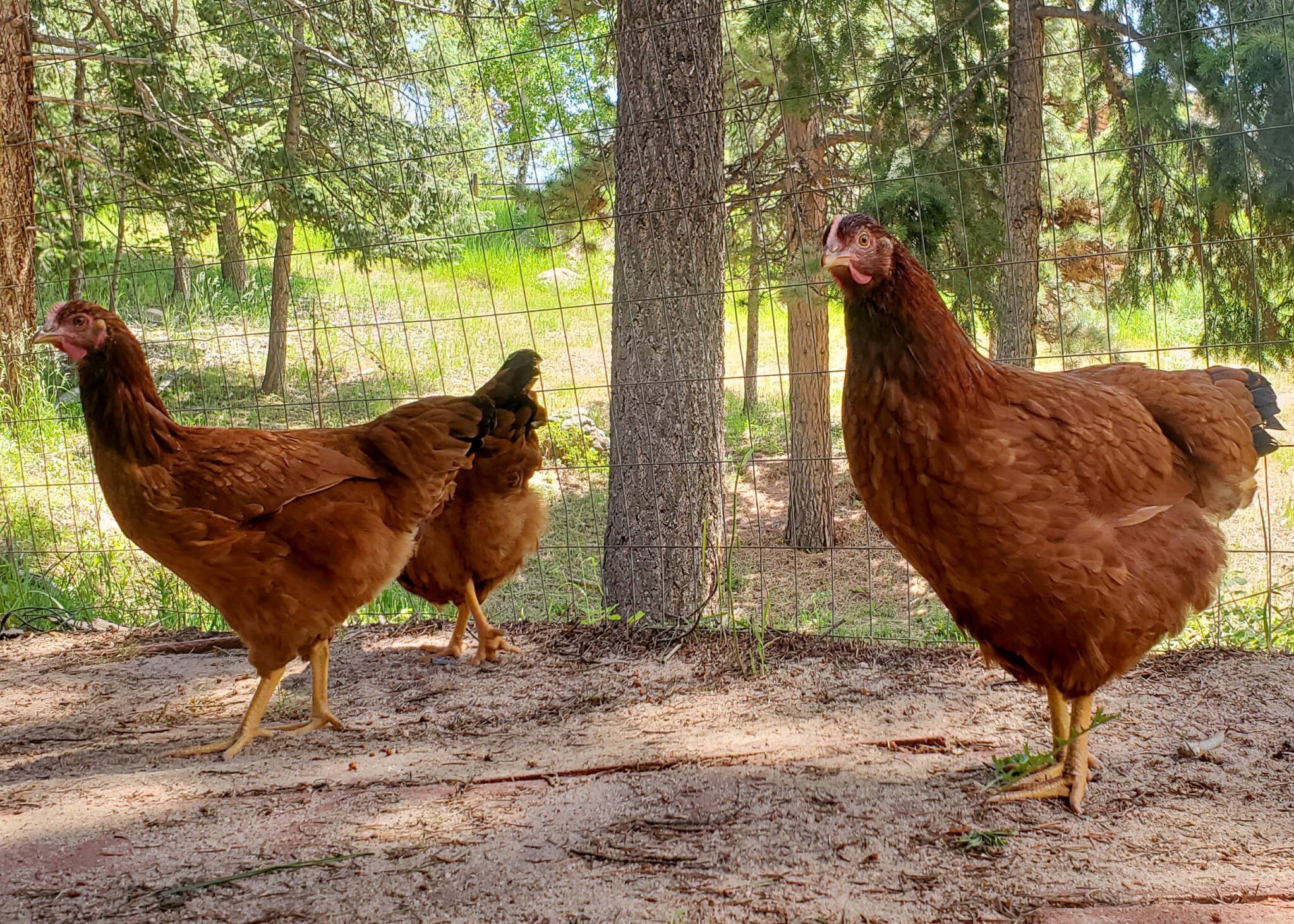
At first thought chickens in a greenhouse sound like a not-so-bad idea. They eat bugs, scratch the soil, and help weed the garden. Sounds like a great combination!
But wait, will they eat my worms? Do they know the difference between a weed and a purposefully planted vegetable? Could some of my garden goodies be potentially poisonous to my flock?
We had questions, so we did the research to bring you the answers! Let’s start with the facts.
8 Chicken Facts

- Chickens are the closest living relatives to the Tyrannosaurus-Rex.
- Chickens were domesticated 8,000 years ago in the jungles of Southeast Asia.
- Chickens can see in full color and ultraviolet light.
- Besides the breed, egg color is determined by the color of the chicken’s earlobe.
- Chickens have a sleep phase called unihemispheric slow-wave sleep. This means that half of their brain is sleeping while the other half is awake. They take sleeping with one eye open very literally.
- Chickens are omnivores.
- Chickens CAN fly, just not very far.
- Chickens are highly intelligent with great memories. They have the ability to understand cause and effect, have self-control, and can pass on their knowledge. Yes, you can train a chicken though it is not easy.
Benefits and Challenges of Chickens in a Garden
Since chickens are omnivores, they can help clean up garden debris and weeds as well as provide pest control. They will help to rid your garden of common pests like slugs, pill bugs, squash bugs, beetles, and grasshoppers, among others. However, they will also eat your garden friends like spiders, ladybugs, and praying mantis. They can help you clean up any garden waste like plant trimmings and weeds. The issue you may have is that chickens in a greenhouse will have a hard time distinguishing between your prized tomato plant and the crabgrass that you want them to eat.

Their little velociraptor toes help them turn soil and compost by scratching. Chickens scratch for a few reasons, but the main two are foraging for food and preparing their dust baths. Allowing chickens to scratch your compost pile can be beneficial in speeding up the process. “Turning the compost pile is my favorite garden chore,” said no gardener ever except for the chicken. You likely do not want your chickens rooting around in your raised garden beds though, so designating them to the compost pile is recommended.

What came first, the chicken or the egg? We may never know the real answer, but what we do know is that egg shells are a great addition to compost as they are high in calcium. Eggshells can also be used to start seeds! Once the seedlings are ready to transplant, simply break the shell, transplant your seeding, and compost the shell bits! Plants like tomatoes, peppers, and eggplant all benefit from higher levels of calcium in the soil. These happen to be some of our favorite summer crops to grow in the Growing Dome.
Chicken Friendly Greenhouse Garden Treats and Things to Avoid
Chickens love fresh veggies. They will often eat the parts that we humans tend to throw into the compost pile like carrot tops and broccoli leaves. They also love beet greens and broccoli stems.






Avoid giving chickens anything moldy. Also, avocados, rhubarb, and onions should never be fed to chickens because they can have fatal consequences.
Considerations for Chickens in a Greenhouse Environment
Chicken manure is “hot” meaning that you do not want to add it directly into your soil and it needs to be composted first. If you do introduce chickens into a greenhouse, try to give them a designated area or at the very least be ready to do some clean-up.

You should not leave your chickens in a greenhouse for any extended period. For our Canadian friends, the Growing Dome can be a place for reprieve for fowl in harsh -40°C winter conditions, but is not a long term solution. In the winter, there is a lack of ventilation due to winterizing the greenhouse in order to trap as much heat as possible.
Also, chickens thrive in humidity levels of 40-60% and your greenhouse will more than likely have higher humidity than that in the winter months. In the summer, the Growing Dome will often exceed the 85°F preferred temperature of chickens. They were not built for heat. That’s why they have built in down jackets.
If you do introduce fowl of any kind into your greenhouse, we recommend using chicken wire to protect freshly planted areas and young plants from the tiny t-rex. They will eat and scratch whatever is in reach and remember they can fly, so either be ready to share or set defined boundaries.
Final Thoughts on Chickens in a Greenhouse
Do the benefits of having chickens in a greenhouse outweigh the potential consequences? It depends on your situation. If it is so cold outside that there is potential for your eyelids to freeze shut, or open for that matter, let the chickens in the greenhouse.

But unless you have the time to properly train them, it is probably best to leave the chickens in their coop or at least outside BAWK-ause they will likely terrorize your plants with their reenactment of Jurassic Park.
You do the garden clean up and weeding. Let them help with the compost. It’s a dirty job, but someone’s gotta do it.
Guess What?

